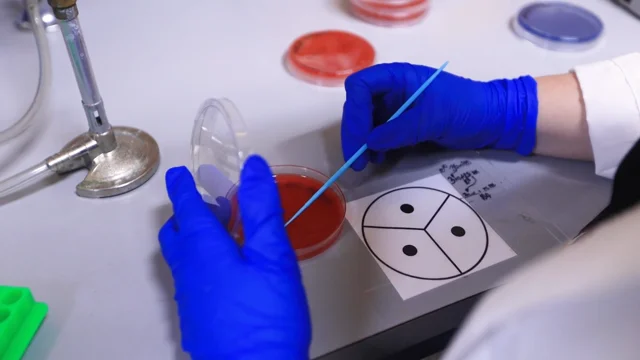Ph.D. in Dermatological Sciences: Introduction, Admission, Registration, Eligibility, Duration, Fees, Syllabus 2024

Introduction:
Embarking on a Ph.D. journey in Dermatological Sciences is a profound exploration into the complexities of skin biology, pathology, and therapeutics. This interdisciplinary field delves into the intricate mechanisms underlying skin health and diseases, offering opportunities for groundbreaking research and clinical advancements.
Admission Process:
- Application Submission: Candidates submit comprehensive applications, including academic transcripts, research proposals, and letters of recommendation.
- Interview: Shortlisted applicants undergo interviews to assess their research interests, academic background, and alignment with program objectives.
- Research Proposal: Applicants are required to submit a detailed research proposal outlining their intended area of study and research objectives.
- Faculty Match: Identifying potential supervisors whose research aligns with the candidate's interests is crucial for successful admission.
- Admission Decision: Successful candidates receive offers of admission based on the evaluation of their application materials, interview performance, and research potential.
Eligibility:
- Educational Background: Applicants should hold a master's degree in dermatology, biology, biochemistry, pharmacology, or a related field from a recognized institution.
- Research Experience: Previous research experience, demonstrated through publications or presentations, is highly valued.
- Academic Excellence: A strong academic record, typically evidenced by a high GPA, is essential for admission.
- Clinical Experience: Clinical experience in dermatology or related fields may strengthen the application and demonstrate practical knowledge of skin diseases.
- English Language Proficiency: Non-native English speakers must demonstrate proficiency through tests like IELTS or TOEFL.
- Interview Performance: The interview serves as a crucial component in the selection process, evaluating the candidate's research aptitude and fit for the program.
Completion Time:
The completion time for a Ph.D. in Dermatological Sciences typically ranges from three to six years. This duration includes coursework, research, experimentation, clinical rotations (if applicable), and dissertation writing. However, completion time may vary based on research progress, clinical requirements, and individual circumstances.
Career Opportunities:
- Academia: Faculty positions at universities, medical schools, or research institutions, involving teaching, research, and mentorship in dermatology and related fields.
- Clinical Research: Opportunities in pharmaceutical companies, biotechnology firms, or clinical research organizations, focusing on drug development, clinical trials, and translational research in dermatology.
- Medical Writing: Positions in medical communication agencies or publishing companies, writing and editing scientific manuscripts, educational materials, and regulatory documents related to dermatological research.
- Healthcare Administration: Roles in healthcare organizations, hospitals, or dermatology clinics, overseeing clinical operations, research initiatives, and quality improvement programs.
- Government and Nonprofit Organizations: Employment in government health agencies, nonprofit foundations, or advocacy groups, working on public health initiatives, disease prevention, and patient education in dermatology.
Syllabus:
- Skin Biology and Pathophysiology: Study of the structure, function, and cellular processes of the skin, including epidermal differentiation, dermal-epidermal interactions, and cutaneous immunology.
- Dermatological Research Methods: Exploration of research methodologies and techniques used in dermatological research, including histology, immunohistochemistry, molecular biology, and bioinformatics.
- Skin Diseases and Disorders: In-depth analysis of common skin diseases, such as psoriasis, eczema, acne, melanoma, and autoimmune dermatoses, including pathogenesis, diagnosis, and treatment approaches.
- Pharmacology and Therapeutics: Understanding of pharmacological principles, drug delivery systems, and therapeutic agents used in dermatology, including topical and systemic treatments for skin diseases.
- Clinical Dermatology: Clinical training in dermatological examination, diagnosis, and management of skin disorders, including patient interactions, case presentations, and treatment planning.
Internship Opportunities:
- Dermatology Clinics: Internships at dermatology clinics or hospitals, gaining hands-on clinical experience in patient care, diagnosis, and treatment under the supervision of dermatologists.
- Research Laboratories: Interning at research institutions or pharmaceutical companies, participating in laboratory experiments, data analysis, and research projects related to dermatological sciences.
- Industry Internships: Internships with biotechnology firms, cosmetic companies, or healthcare startups, working on product development, clinical trials, or market research projects in dermatology.
- Medical Writing Agencies: Interning at medical communication agencies, assisting in writing scientific manuscripts, literature reviews, and educational materials on dermatological topics.
- Global Health Organizations: Internships with nonprofit organizations or international health agencies, participating in dermatology outreach programs, public health initiatives, and community-based research projects.
Scholarships and Grants:
- Institutional Funding: Departments or universities may offer scholarships, fellowships, or assistantships to support Ph.D. students, covering tuition fees and living expenses.
- Research Grants: Securing funding from government agencies, industry sponsors, or research foundations to support research projects, experimentation, and dissertation writing in dermatological sciences.
- Travel Grants: Financial support for conference attendance, research presentations, or fieldwork, enabling students to disseminate their findings and network with peers and experts.
- Industry Sponsorships: Sponsorships from pharmaceutical companies, dermatology clinics, or cosmetic firms to support Ph.D. research projects aligned with industry needs or product development.
- Disease-Specific Grants: Grants from disease-specific foundations or nonprofit organizations funding research on specific skin disorders, such as melanoma, psoriasis, eczema, or skin cancer.
FAQs:
What are the emerging areas of research in dermatological sciences?
Emerging areas include personalized medicine, immunotherapy, nanotechnology, microbiome research, and digital health technologies for dermatological applications.
How can I prepare for a Ph.D. in dermatological sciences during my undergraduate studies?
Focus on coursework in biology, biochemistry, pharmacology, and research methods. Seek research opportunities, volunteer in dermatology clinics, and build strong relationships with faculty for recommendations.
Are there opportunities for international collaborations in dermatological research?
Yes, many research institutions and pharmaceutical companies collaborate on global research initiatives, clinical trials, and epidemiological studies in dermatology.
What are the prospects for academic careers in dermatological sciences?
Academic careers offer opportunities for teaching, research, and clinical practice in university settings, medical schools, or research institutions, with the potential for tenure and academic leadership roles.
How does a Ph.D. in dermatological sciences contribute to patient care and public health?
Ph.D. graduates play essential roles in advancing scientific knowledge, developing new treatments, and improving diagnostic techniques in dermatology, ultimately benefiting patient outcomes and public health initiatives




